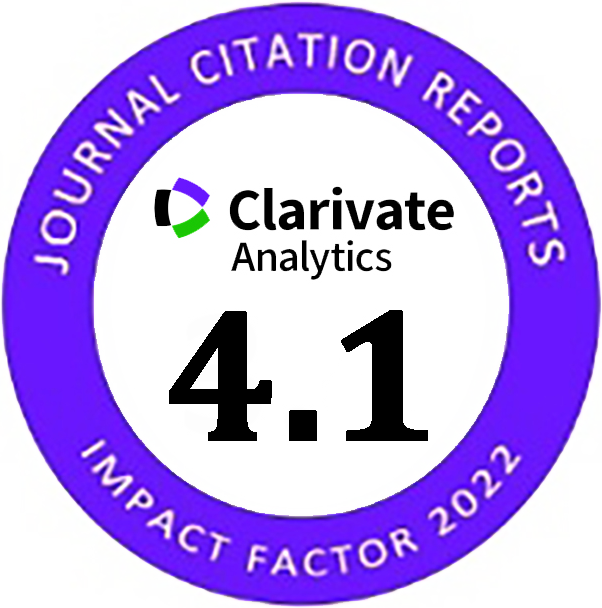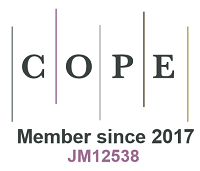Investigating the Behavior of the Plastic Concrete Made with Different Types of Fibers with an Approach to the Mixing Plans of Plastic Concrete
Abstract
The complicated nature of the plastic concrete’s behavior compared to conventional concrete has led to the study of the behavior of the plastic concrete and the advent of suitable solutions to improve the behavior of the concrete due to the abundance of plastic concrete in the construction of cut-off walls under the dams. For the purpose of a practical study, at first, the mixing plan of the plastic concrete cut-off wall in Nargesi dam was investigated. Then, 22 primitive mixing plans were identified and labeled in the laboratory to identify the optimal mixing plan in accordance with the required technical criteria. After selecting the desired optimal design, to investigate the effect of the fiber on the behavior of this concrete, %0.19 and 0.38% volumes of polypropylene, hooked metal and corrugated metal fibers were used; hence, 168 samples were presented. Compressive strength for the ages of 7, 28, 42 and 90 days with elasticity modulus as well as corresponding stress-strain curves and tensile strength for 90-day age were investigated. The results indicated that the extremely high compressive strength and modulus of elasticity have a very high impact on the amount of bentonite and the ratio of water to bentonite so that with increasing these two values, the compressive strength and modulus of elasticity decrease significantly. The results indicated that using fibers increases deformation which is more evident in samples made with polypropylene fibers. The results also showed that the compressive strength and modulus of elasticity of plastic concrete is increasing linearly with time, and the elastic modulus growth rate is lower than the compressive strength due to the increase in the duration of time, and in other words, the plastic state concrete changes less over time.
Keywords
References
Alam-Falaki, A. & Ghasemzadeh-Mosanezhad, S. H. “Study of mechanical properties of plastic concrete containing bentonite using waste rubber powder.” (Mastery thesis), Gilan University, Iran. (2014).
Alvarz, J. M., Bernal, L. Alberto, C. & Surescu, M. “Gathering and translating by Ahmad Farhadi Langroudi, Moshaver Mahab Qods engineering supervising affair.” May 1995, plastic concrete properties of Convento Viejo dam flood wall, Chile. (1982).
Pashazadeh, A. Kia Khosravi, M. & Ganjian N. “Estimating Plastic Concrete Mixing Plan Suitable for Flood Wall of Mud Dams.” 14th Civil Students Conference and First International Civil Students Conference. Semnan, Iran. (2009).
Ryan, Christopher R. "Slurry cutoff walls: Applications in the control of hazardous wastes." In Hydraulic barriers in soil and rock. ASTM International, 1985. doi:10.1520/stp34562s.
REMR. “Design procedure for plastic concrete cut off walls.” Technical Note GT-SR-1.3. (1992).
Thomas, W., Kauschinger, J. L., & Perry, E. B. “Plastic concrete cut off walls for earth dams.” US Army Corps of Engineers, Technical Report No. REMR-GT-15, Waterways Experimental station, Vicksburg, MS, (1991): 71-170.
Pashazadeh, A. & Chekani-Azar, M. “Estimating an Appropriate Plastic Concrete Mixing Design for Cutoff Walls to Control Leakage under the Earth Dam.” Journal of Basic and Applied Scientific Research, 1. 9. (2011): 1295-1299.
Soroush, M., & Mojtahedi, A. F. “General design and implementation of plaster concrete reinforcement walls following dams.” Proceedings of the Workshop on Special Issues in the Design of Dams and its Approaches, Isfahan University of Technology, Iran. (2002).
Kahl, T. W., J. L. Kauschinger, and E. B. Perry. Plastic Concrete Cutoff Walls For Earth Dams. Technical Report. No. Tech Rept REMR-GT-15. 1991.
ICOLD “Filling materials for watertight cut off walls.” Bulletin No. 51, International Committee of Large Dams, Paris, France. (1995).
Ata, Alaa A., Tarek N. Salem, and Nadia M. Elkhawas. “Properties of Soil–bentonite–cement Bypass Mixture for Cutoff Walls.” Construction and Building Materials 93 (September 2015): 950–956. doi:10.1016/j.conbuildmat.2015.05.064.
García-Siñeriz, José Luis, María Victoria Villar, María Rey, and Beatriz Palacios. “Engineered Barrier of Bentonite Pellets and Compacted Blocks: State after Reaching Saturation.” Engineering Geology 192 (June 2015): 33–45. doi:10.1016/j.enggeo.2015.04.002.
Garvin, Stephen L., and Carolyn S. Hayles. “The Chemical Compatibility of Cement–bentonite Cut-Off Wall Material.” Construction and Building Materials 13, no. 6 (September 1999): 329–341. doi:10.1016/s0950-0618(99)00024-0.
Koch, Dietrich. “Bentonites as a Basic Material for Technical Base Liners and Site Encapsulation Cut-Off Walls.” Applied Clay Science 21, no. 1–2 (April 2002): 1–11. doi:10.1016/s0169-1317(01)00087-4.
Maghrebi, M.F., Azad, D., Mousavi, S.H., Saboor Kazeran, H. “Using plastic concrete for canal lining utilization.” in: ICID 21st International Congress on Irrigation and Drainage, October, Tehran, Iran. (2011).
Naderi, M. “Effect of different constituent materials on the properties of plastic concrete.” Int. J. Civ. Eng. 3. 1. (2005): 10–19.
Tahershamsi, A. Bakhtiary, A. Binazadeh, N. “Effects of clay mineral type and content on compressive strength of plastic concrete.” Iran. J. Mining Eng. 4 .7. (2009): 35–42.
Zhang, Peng, Qiaoyan Guan, and Qingfu Li. “Mechanical Properties of Plastic Concrete Containing Bentonite.” Research Journal of Applied Sciences, Engineering and Technology 5, no. 4 (February 1, 2013): 1317–1322. doi:10.19026/rjaset.5.4867.
Qizheng, W., Qingyou, W. & Jialiu, P. “Mechanical properties of plastic concrete and nonlinear structural analyses of plastic concrete cut-off wall.” J. of Computational Mechanics in Structural, (1992): 273- 285.
Torabi, G. “The method of mixing concrete plastics with fixed strain.” (Mastery thesis), Isfahan University of Technology, Iran. (2008).
Xanthakos, P. Slurry Walls, Mc Graw-Hill Book Company, New York. (1979).
Passuello, Alexandra, Giacomo Moriconi, and Surendra P. Shah. “Cracking Behavior of Concrete with Shrinkage Reducing Admixtures and PVA Fibers.” Cement and Concrete Composites 31, no. 10 (November 2009): 699–704. doi:10.1016/j.cemconcomp.2009.08.004.
Song, P.S., S. Hwang, and B.C. Sheu. “Strength Properties of Nylon- and Polypropylene-Fiber-Reinforced Concretes.” Cement and Concrete Research 35, no. 8 (August 2005): 1546–1550. doi:10.1016/j.cemconres.2004.06.033.
Soutsos, M.N., T.T. Le, and A.P. Lampropoulos. “Flexural Performance of Fibre Reinforced Concrete Made with Steel and Synthetic Fibres.” Construction and Building Materials 36 (November 2012): 704–710. doi:10.1016/j.conbuildmat.2012.06.042.
Nili, Mahmoud, and V. Afroughsabet. “The Effects of Silica Fume and Polypropylene Fibers on the Impact Resistance and Mechanical Properties of Concrete.” Construction and Building Materials 24, no. 6 (June 2010): 927–933. doi:10.1016/j.conbuildmat.2009.11.025.
Yao, Wu, and Wenhui Zhong. “Effect of Polypropylene Fibers on the Long-Term Tensile Strength of Concrete.” Journal of Wuhan University of Technology-Mater. Sci. Ed. 22, no. 1 (February 2007): 52–55. doi:10.1007/s11595-005-1052-z.
Saeidi-Jam, S., & Azimi, A. “Study of strength and permeability parameters of plastic concrete reinforced with polypropylene fibers.” Journal of Concrete Research, 1. 10. (2015): 135-144.
Abbaslou, Hakime, Ali Reza Ghanizadeh, and Amir Tavana Amlashi. “The Compatibility of Bentonite/sepiolite Plastic Concrete Cut-Off Wall Material.” Construction and Building Materials 124 (October 2016): 1165–1173. doi:10.1016/j.conbuildmat.2016.08.116.
Saberbazkia-Gurai, M., & Ghasemzadeh-Mosanezhad, S. H. “Effect of adding polypropylene fibers on concrete specification.” (Mastery thesis), civil engineering department, structural tendency, Guilan University, Iran. (2017).
Lotf-Ahmadi, S., & Ghasemzadeh-Mosanezhad, S. H. “Mechanical Properties of Kaolinite Plastics Concrete Using Methaclene and Polypropylene Fibers.” (Master thesis), Guilan Civil Construction Structural Tendency University, Iran. (2014)
Davidson. P, Calvi, “Slurry walls: design construction and quality record.” ASTM, p.c. No. 044-011290-38.
ASTM C143-90. “Standard test method for slump hydraulic cement concrete.” 4. 2. (1997): 88-90.
International commission on large dams (ICOLD). “Filling materials for watertight cut-off walls.” International Committee of Large Dams, Paris, Bulletin No. 51. (1985).
Kazemian. S., Ghareh, S., Torkanloo. L. "To investigation of plastic concrete bentonite changes on its physical properties." procedia Engineering, 145. (2016): 1080-1087.doi: 10.1016/j.proeng.2016.04.140.
DOI: 10.28991/cej-2019-03091240
Refbacks
- There are currently no refbacks.
Copyright (c) 2019 abolfazl OStovarzijerdi, Akbar Ghanbari, Mohammad Karkon

This work is licensed under a Creative Commons Attribution 4.0 International License.






